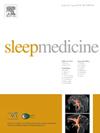为什么 NIV 设置定义可能很棘手:触发灵敏度
IF 3.8
2区 医学
Q1 CLINICAL NEUROLOGY
引用次数: 0
摘要
无创通气(NIV)广泛应用于儿童。自发/定时(S/T)模式是家用无创通气最常用的模式。目前市场上有各种不同的设备,制造商可以自由命名模式和定义设置,没有任何规定。特别是,不同制造商和/或设备对触发灵敏度的定义仍然存在差异。吸气触发(TgI)灵敏度可根据数字或文字评级表进行设置,而呼气触发(TgE)灵敏度可设置为吸气流量峰值的百分比,或使用数字或文字评级表,与吸气流量的特定预定百分比相对应。此外,TgE 灵敏度还可以根据吸气峰值流量或吸气峰值流量的减弱程度来设置,这可能会非常令人困惑。患者与呼吸机不同步(PVA)可能是由于用户对设置理解不充分造成的,这具有挑战性。我们在此报告了四名儿童和青少年因 TgI 和/或 TgE 设置不正确而导致 PVA 的病例。这就要求统一设置的定义,特别是触发敏感度的定义。同时,NIV 专业人员应了解不同的定义,以避免设置错误导致 PVA。本文章由计算机程序翻译,如有差异,请以英文原文为准。
Why NIV setting definitions may be tricky: Trigger sensitivity
Noninvasive ventilation (NIV) is widely used in children. The spontaneous/timed (S/T) mode is the most common used mode for home NIV. Different devices are available, and the manufacturers are free to name the modes and define the settings, with no regulation. In particular, the definitions of the trigger sensitivities still differ between manufacturers and/or devices. The inspiratory trigger (TgI) sensitivity may be set according to a numerical or word-rating scale, while the expiratory trigger (TgE) sensitivity may be set as a percentage of the peak inspiratory flow, or using a numerical or word rating scale which correspond to specific predefined percentages of inspiratory flow. Moreover, the TgE sensitivity may be set according to the peak inspiratory flow or to the diminution of peak inspiratory flow, which may be very confusing. Patient-ventilator asynchrony (PVA) may be due to an inadequate comprehension of the settings by the user, which is challenging. We report here the cases of four children and adolescents with an incorrect setting of the TgI and/or TgE, leading to PVA. This pleads for a harmonization of the definitions of the settings, and in particular of the trigger sensitivities. In the meanwhile, NIV professionals should be aware of the different definitions to avoid setting errors leading to PVA.
求助全文
通过发布文献求助,成功后即可免费获取论文全文。
去求助
来源期刊

Sleep medicine
医学-临床神经学
CiteScore
8.40
自引率
6.20%
发文量
1060
审稿时长
49 days
期刊介绍:
Sleep Medicine aims to be a journal no one involved in clinical sleep medicine can do without.
A journal primarily focussing on the human aspects of sleep, integrating the various disciplines that are involved in sleep medicine: neurology, clinical neurophysiology, internal medicine (particularly pulmonology and cardiology), psychology, psychiatry, sleep technology, pediatrics, neurosurgery, otorhinolaryngology, and dentistry.
The journal publishes the following types of articles: Reviews (also intended as a way to bridge the gap between basic sleep research and clinical relevance); Original Research Articles; Full-length articles; Brief communications; Controversies; Case reports; Letters to the Editor; Journal search and commentaries; Book reviews; Meeting announcements; Listing of relevant organisations plus web sites.
 求助内容:
求助内容: 应助结果提醒方式:
应助结果提醒方式:


